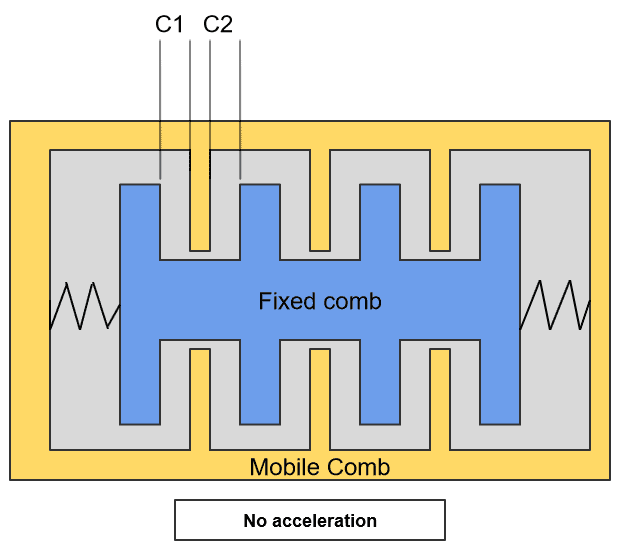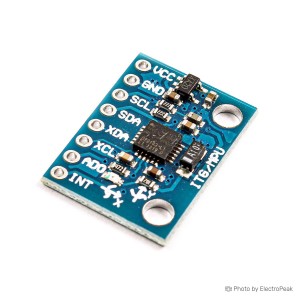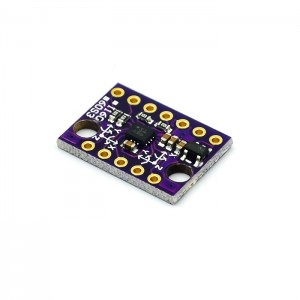Gyroscope
Gyroscope Sensor
p>A gyroscope sensor is a device that measures and maintains the orientation and angular velocity of an object. These sensors are crucial components in various applications, including navigation systems, drones, and electronic stability control in vehicles.

Price of Gyroscope Sensors:
The price of gyroscope sensors varies based on factors such as the number of axes, accuracy, and additional features. Entry-level models like the GY-521 MPU6050 are budget-friendly, while advanced sensors with multiple axes and sensors may have a higher cost.
Tips for Buying Gyroscope Sensors:
Consider factors like the number of axes, communication interface (SPI/I2C), and additional sensors integrated into the module (e.g., accelerometer, magnetometer). Choose a gyroscope sensor that aligns with your project's requirements for accurate angular velocity measurement.
Popular Models of Gyroscope Sensors:
GY-521 MPU6050 3-Axis Accelerometer Gyroscope Module: A widely used module featuring a 3-axis accelerometer and gyroscope, suitable for various motion-sensing applications.
MPU9250 SPI/I2C 9-Axis Gyro Accelerator Magnetometer Module: A high-performance sensor module with a 9-axis combination of gyroscope, accelerometer, and magnetometer, providing comprehensive motion data.
GY-86 10DOF IMU MPU6050 HMC5883L MS5611 Sensor Module: An Inertial Measurement Unit (IMU) module combining gyroscope, accelerometer, magnetometer, and barometric pressure sensor for precise motion tracking.
GY-87 10DOF IMU MPU6050 HMC5883L BMP180 Sensor Module: A 10-degree-of-freedom IMU module with additional sensors like a barometer, suitable for applications requiring environmental sensing along with motion tracking.
GY-801 10DOF IMU BMP180 ADXL345 HMC5883L L3G4200D Sensor Module: An IMU module with multiple sensors including a barometer, accelerometer, gyroscope, and magnetometer, offering a comprehensive solution for motion and environmental sensing.
GY-91 MPU9250+BMP280 10-DOF 9-Axis Gyro Compass Accelerometer Module: Integrates a gyroscope, accelerometer, magnetometer, and barometer, providing a complete set of sensors for motion and environmental monitoring.
CJMCU 9-Axis IMU MPU9250 + BMP280 Atmospheric Sensor: Combining a 9-axis IMU with a barometer, this module is suitable for applications requiring both motion sensing and atmospheric pressure measurement.
GY-BMI160 Module 6DOF 6 Axis Angular Velocity: A 6-degree-of-freedom module providing angular velocity data, suitable for applications where precise motion tracking is essential.
MPU6000 Gyroscope and Accelerometer Module: The MPU6000 module integrates a 3-axis gyroscope and accelerometer. Renowned for reliability, it excels in precise motion sensing, making it a preferred choice for applications like drones and robotics. Its compact design and versatile communication interfaces enhance its suitability for diverse projects
How does a gyroscope sensor operate?
A gyroscope sensor operates on the principle of angular momentum. Imagine a spinning top—when you spin it, it resists changes in its rotation axis. Similarly, a gyroscope sensor detects angular velocity and direction as an object moves or rotates. This information is crucial for devices like smartphones, enabling features like screen rotation and motion-based gaming. In simple terms, the gyroscope acts like a responsive compass, enhancing the device's ability to detect and interpret rotational movements accurately.

Are gyroscopes affected by magnetic fields?
Absolutely! External magnetic fields can affect gyroscope measurements if not addressed during calibration or design. It's essential to consider this sensitivity by implementing careful calibration and thoughtful design to reduce potential impacts on the accuracy and reliability of gyroscope readings.
Can gyroscope sensors be used in robotics for movement control?
Yes, gyroscope sensors play a vital role in robotics for movement control and navigation. Robots equipped with gyroscope sensors can accurately sense changes in their orientation and adjust their movements accordingly. This is especially valuable in applications where precise control and maneuverability are essential, such as autonomous vehicles and robotic arms.
How can I verify if my gyroscope sensor connected to Arduino is functioning properly?
Ensuring the proper functioning of your gyroscope sensor connected to Arduino is straightforward. Begin by running a simple Arduino sketch designed to read and display gyroscope data. This can involve rotating or tilting the sensor in various directions. If the displayed data corresponds accurately to the sensor's movements, it indicates the gyroscope is operational. Additionally, check the wiring connections to ensure they match the specifications provided in the sensor's datasheet.



